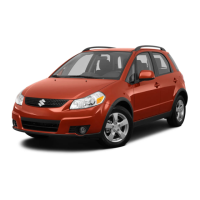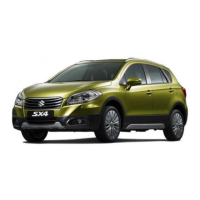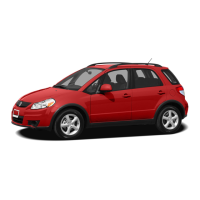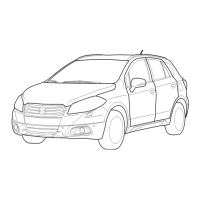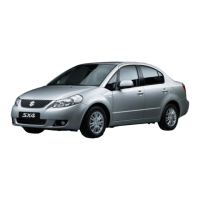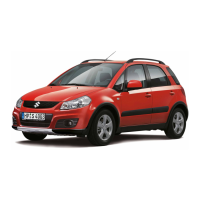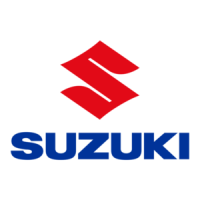Child restraint
EXAMPLE
Booster
seat
EXAMPLE
SUZUKI highly recommends that
you
use
a
child restraint system
to
restrain infants
and
small children. Many different types of
child restraint systems are available; make
sure that the restraint system
you
select
meets applicable safety standards.
All
child restraint systems are designed to
be
secured
in
vehicle seats
by
either seat
belts (lap belts or the lap portion
of
lap-
shoulder belts)
or
by
special rigid lower
anchor bars built into
the
seat. Whenever
possible, SUZUKI recommends that child
restraint systems
be
installed
on
the rear
seat. According to accident statistics, chil-
65D197 dren are safer when properly restrained
in
rear seating positions than
in
front seating
positions.
If
you
must use a front-facing child restraint
in
the front passenger's seat, adjust the
passenger's seat
as
far back
as
possible.
(For
EU
Countries)
When purchasing a child restraint and
install it to your SUZUKI, refer to
the
infor-
mation about suitability for child restrains
shown
in
"Child Restraint System for
EU
Countries"
in
this section.
The child restraint installation
to
this model
is
limited
to
the left position
of
the rear seat
65D203 except ISOFIX type child restraint of the
group
1;
child weight 9
to
18kg.
NOTE:
Observe any statutory regulation about
child restraints.
BEFORE DRIVING
65D607
A.
WARNING
If
your
vehicle is equipped with a
front
passenger air bag,
do
not install
a rear-facing child restraint in
the
front
passenger's seat. If the passen-
ger's
air
bag inflates, a child in a rear-
facing child restraint could be killed
or
seriously injured. The back
of
a
rear-facing child restraint
would be
too
close
to
the inflating air bag.
A.
WARNING
If
you install a child restraint system
in the rear seat,
slide the front seat
for
enough forward so that the
child's
feet
do
not
contact the front seat-
back.
This
will
help avoid
injury
to
the
child
in
the
event
of
an accident.
1-28
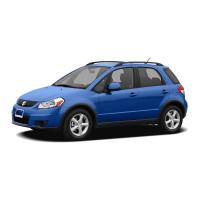
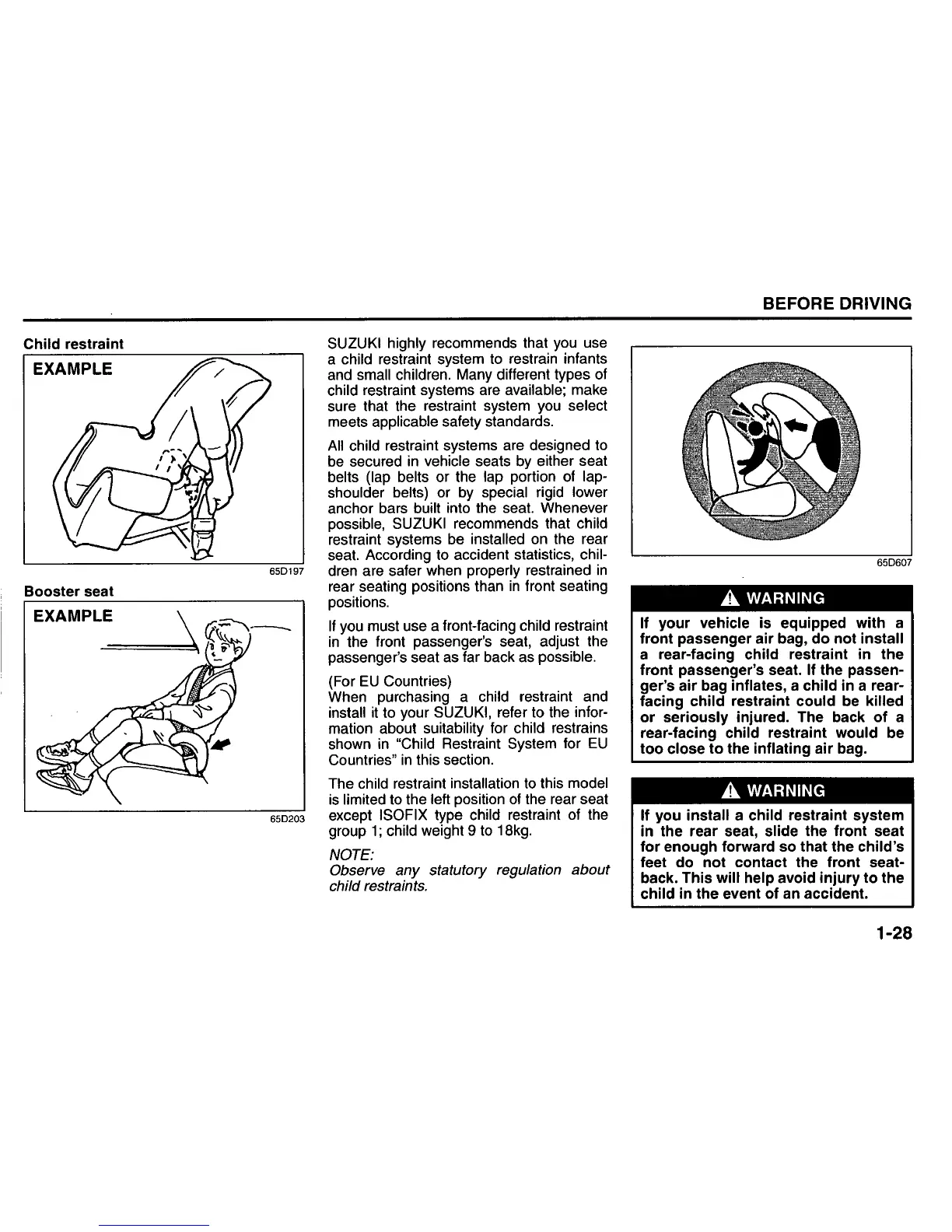